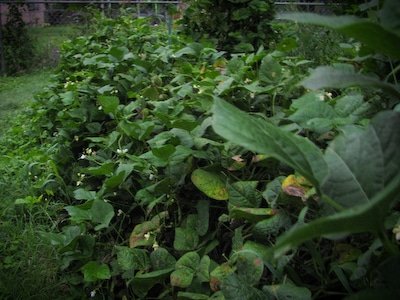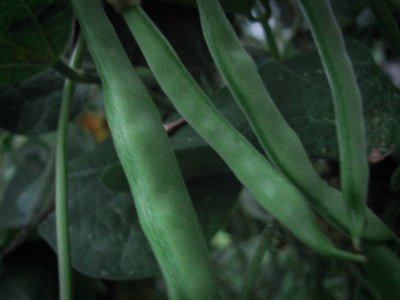It’s past time for planting my fall garden in Austin, and yet in my limited garden space the overgrown but still producing summer crops take up most of the four beds. Between nine foot tall okra, supposed bush beans that turned out to be super-spreading pole beans and a tomato patch that continues to tantalize me with the prospect of just a few more tomatoes, I don’t have much space left to put in greens, broccoli, collards, garlic, and other Fall delights. Crop rotation plans seem to go out the window.
So I developed a plan of action. First I remove the crops that are definitely finished as well as the summer weeds that got out of hand. This gives me a little space to drop in some greens here and there. Then I take a hard look at what summer crops just really didn’t work, meaning that I have to recognize that the stunted corn has got to go. Third, I prune back the still producing crops sufficiently so that I may actually enter the garden. And finally, I use the Austin Organic Gardeners planting calendar as a rough guide to determine what absolutely needs to go in now and what crops I can push back on planting until late fall/early winter.
In addition, under the LED grow lights in my workroom, I have started in flats several types of mustards, lettuces, spinaches, etc. These become my reserve army of plants ready to pop into any space that opens up in the garden on an as needed basis. Having the plants ready allows me to quickly maximize available space.
East Austin offers superb conditions for growing food year round. However, these benefits often remain hidden behind scorching heat, unpredictable weather conditions, and “reversed” gardening seasons. A little planning helps fill in the gaps and truly stretch the season to twelve months.



